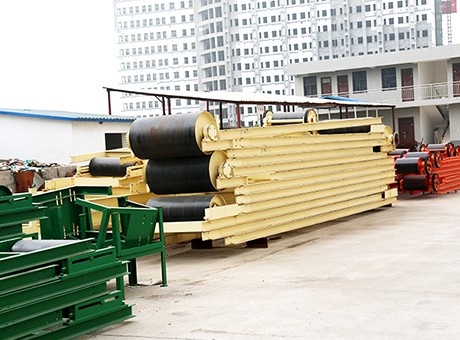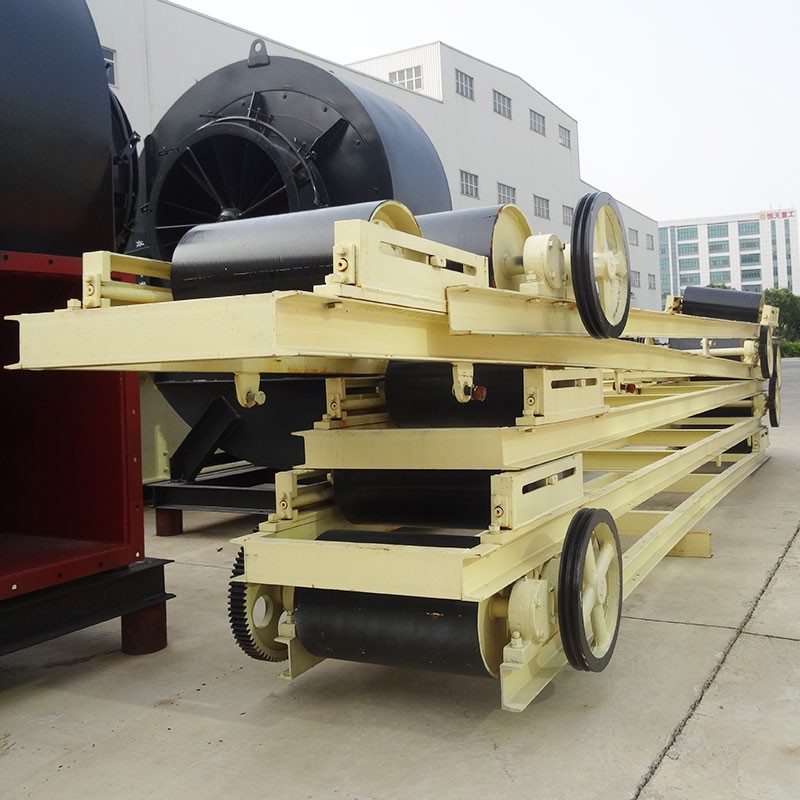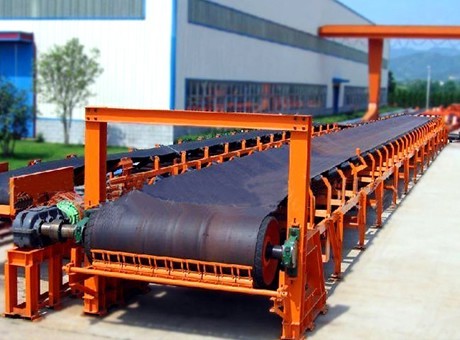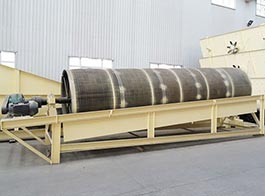

Belt Conveyor
Processing ability: 78–2195 t/h
Belt width: 500–1600 mm
Length: 0–40 m
Applied material: coal, gravel, sand, cement, chemical fertilizer, food, etc Get price list
you can click the button and contact us.
Depiction of Belt Conveyor
Belt conveyor(Belt conveyer) is the material transporting machine which transports the material in a certain line.

Conveyor belt system is the common conveying machinery. Friction force drives the machine to achieve continuous transportation. In daily life, it is also called belt conveyor or convery belt. The material on one end will be discharged on the other end driven through the belt, and then the delivery process is completed.
Elevating conveyor belt is widely used in present chemical industry, which can be used for transporting bulk material as well as packed products. It can also be used as the link between multiple devices.
Mining belt equipment is mainly used in mining, such as underground mining roadway, mine ground conveying system, open pits or mineral processing field.
Belt Conveyor Parts
A conveyor belt (or belt conveyor) consists of two or more pulleys, with a continuous loop of material - the conveyor belt - that rotates about them. One or both of the pulleys are powered, moving the belt and the material on the belt forward. The conveyors consist of standard parts, which are advanced and simple in structure, and easy to maintain. Our vibrating equipment is adaptable for stationary and mobile crushing plants. According to different transferring equipment, the transfer system can be one independently or multi-conveyors or combined with other transmitting equipment.
The belt consists of one or more layers of materials. It can be made out of rubber. Many belts in general material handling have two layers. An under layer of material to provide linear strength and shape is called a carcass and an over layer is called the cover. The carcass is often a cotton or plastic web or mesh. The cover is often various rubber or plastic compounds specified by use of the belt. Covers can be made from more exotic materials for unusual applications such as silicone for heat or gum rubber when traction is essential.
Working Features
Material flowing over the belt may be weighed in transit using a beltweigher. Belts with regularly spaced partitions, known as elevator belts, are used for transporting loose materials up. Belt Conveyors are used in self-unloading bulk freighters and in live bottom trucks. Conveyor technology is also used in conveyor transport such as moving sidewalks or escalators, as well as in many manufacturing assembly lines. Stores often have conveyor belts at the check-out counter to move shopping items. Ski areas also use conveyor belts to transport skiers up the hill.Parameters Type
| Belt Width (mm) |
Conveying length (m) Power (kw) |
Conveying speed (m/s) |
Conveying capacity (t/h) |
||
| 400 | ≤10 2.2 |
10-15 3-4 |
15-30 4-7.5 |
1.25-2.0 | 30-60 |
| 500 | ≤10 3 |
10-15 4-5.5 |
15-30 5.5-7.5 |
1.25-2.0 | 40-80 |
| 650 | ≤10 4 |
10-15 7.5 |
15-30 7.5-11 |
1.25-2.0 | 80-120 |
| 800 | ≤10 5.5 |
10-15 7.5 |
15-30 7.5-15 |
1.25-2.0 | 120-200 |
| 1000 | ≤10 7.5 |
10-20 7.5-11 |
20-40 11-22 |
1.25-2.0 | 200-320 |
| 1200 | ≤10 11 |
10-20 11-15 |
20-40 15-30 |
1.25-2.0 | 290-480 |
| 1400 | ≤10 15 |
10-20 15-22 |
20-40 22-45 |
1.25-2.0 | 400-680 |
| 1600 | ≤10 18.5 |
10-20 18.5-30 |
20-50 30-75 |
1.25-2.0 | 600-1080 |
| 1800 | ≤10 22 |
10-20 22-45 |
20-50 45-110 |
1.0-2.0 | 800-1500 |
| 2000 | ≤10 30 |
10-20 30-55 |
20-50 55-13 |
1.0-2.0 | 1000-2000 |
| 2400 | ≤10 45 |
10-20 45-75 |
20-50 75-185 |
1.0-2.0 | 1500-3000 |
Note:processing Capacity May Vary With Different Materials And Feeding Sizes.
Send Enquiry
Please enter your requirement and contact information and we'll get back to you as soon as possible.

![]() 30 seconds for connecting online customer service
30 seconds for connecting online customer service
![]() within 24 hours for getting email reply
within 24 hours for getting email reply
![]() factory-direct sale, 100% factory price
factory-direct sale, 100% factory price



